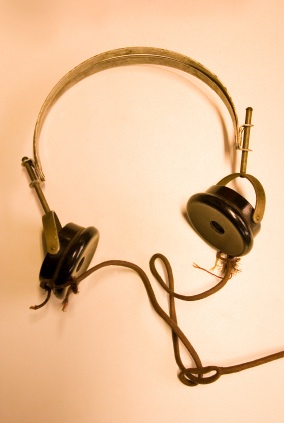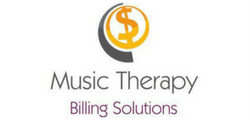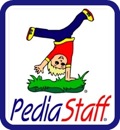This blog post is a departure from typical Maven posts. But it incorporates 3 things I love: music, technology, and history. So when the author, Michael Springman, approached me about writing this post, I thought “Why not?” I hope you enjoy this walk down memory lane…and maybe even learn something new in the process 🙂
The devices we use to enjoy our favorite music have changed drastically since the first recorded sounds were produced in the late 1800’s. While we thought our cassette tapes were groundbreaking back in the 70’s, technology’s exponential advancement has brought us to the digital recording we listen to today. The following is a timeline of how we’ve listened to music over the past 100+ years.
1877 – The Phonograph
Also known as a gramophone and record player, the phonograph is still treasured by some throwbacks today who vow that you just can’t recreate the sound of vinyl. The phonograph was invented by Thomas Edison, who was the first to create a device to reproduce a recorded sound, by using a needle to trace the wavy lines that are etched, scratched or engraved onto a rotating disc or cylinder, thus reproducing sound waves. Edison’s first ‘record’ was a tinfoil sheet cylinder.
1921 – Radio
Nikola Tesla, a Serbian who had moved to the US in 1884, is widely credited with the invention of the radio, with his first transmissions of coded signals being sent in 1896 over a mile. James Maxwell showed theoretically that electromagnetic waves could transmit through the air, and many others demonstrated it in laboratory settings. But radio as we know it today, able to transmit voice over the air, came in 1921.
1965 – 8-track Tape
William Powell Lear (of Lear Jet) invented the 8-track in the early 1960s, officially released in 1965. The first portable audio format, the single reel device was popular for 15 years. It was infamous for bad sound quality, held about 40 minutes of music, and today stands as an icon of outdated technology.
1970s – Cassette Tape
Magnetic tape was being used in music studios during the 1950s, but the portable cassette tape was not until the late 1970s. More compact than the 8-track with far better sound quality, the cassette tape meant the end of the 8-track, especially when Sony introduced the Walkman. Remember mix tapes?
1982 – The Compact Disc
James Russel is credited with inventing the compact disk back in 1965. The CD is an optical disc that is capable of storing digital data. In development for nearly two decades, Sony introduced the first ever album released on CD (Billy Joel’s 52nd Street). Even with the advent of the MP3, the Compact Disc remains in use today by many.
1987 – Digital Audio Tapes (DAT)
Digital audio tapes were and still are the standard in professional recording circles, but the high cost of the players prevented them from becoming very popular to the average consumer. They were intended to replace the audio cassette tape, but aside from the expense there was also concern over unauthorized digital copies.
1989 – Moving Pictures Experts Group (MP3)
Invented in Germany, the MP3 has changed the face of music dramatically. With the boom in personal computers followed by the dawn of the Internet, the MP3 format allows millions of users to access music in a whole new way. The compression format shrinks digital audio files without any noticeable sound degradation, making it possible to store large quantities of music files onto your computer or your MP3 player (introduced in 1998).
2001 – Advanced Audio Coding (AAC)
Debuted in 2001 at the Consumer Electronics Show, this new audio compression technology has rapidly become the new standard. It produces smaller file sizes, better sound quality than the MP3, and features integral copyright protection. AAC is supported by a wide array of electronic devices from the iPod and iPad to the Windows Phone and iPhone and even gaming consoles such as PlayStation 3 and Xbox 360.
About the Author: This blog post was written by Michael Springman of FLV.com. FLV.com offers a , a free FLV Player and a free FLV Downloader allowing users to save, convert and play their favorite FLV (Flash Video) files from sites like YouTube on their own computers. Whether you are looking to convert FLV to AVI or FLV to iPhone, you can always find the tools you need to enjoy your favorite videos at FLV.com.



 orcid.org/0000-0001-8665-1493
orcid.org/0000-0001-8665-1493






{ 7 comments… read them below or add one }
I love these kind of posts too!
One small addition – the Sony Minidisc that came out in the mid ’90s – I loved it: great sound, smaller than a cd (so the player could easily fit in your jeans pocket) and best of all – no skipping or buffering so you could run and even dance while listening on the go. Big in Japan – failed everywhere else.
Cool post – thanks!
So many audio formats are missing. As mentioned above MiniDisc. How about Reel To Reel? Yup, you could once buy albums in that format. DVD Audio. Super AudioCD. Also FLAC, WAV, AIFF are some of the biggies among lossless digital formats.
Prior to mp3 encoding… the earliest music stores sold a DRM’d digital format called Liquid Audio – http://en.wikipedia.org/wiki/Liquid_Audio
Oh and RealAudio.
Oh… and how can I forget Edison’s Phonograph Cylinder http://en.wikipedia.org/wiki/Phonograph_cylinder
Just saw this on mashable and while it’s not entirely related, it does give some amazing insight into the digital revolution of the music industry…all in 3 minutes! http://youtu.be/_AMf_OpOIvo
Thanks for sharing, Rachel! I can’t wait to watch that. @Mike and @Andrew Thank you for contributing to this list! It’s amazing the various technologies that have been and are available, isn’t it? ~Kimberly
@Kimberly – Thank you so much for allowing me to post here! I really appreciate all the comments and kind words.
@Andrew- The mini-disc is a great call. There are some formats that I forgot about and some that I skipped for the sake of keeping the post reasonably short.
@Mike – You definitely called out some formats I didn’t even think about- thanks for sharing!
@Rachel- That is very cool video- thanks for sharing!
Nice article it really covers almost all of the history of music formats but nevertheless amazing.
You must log in to post a comment.
{ 1 trackback }